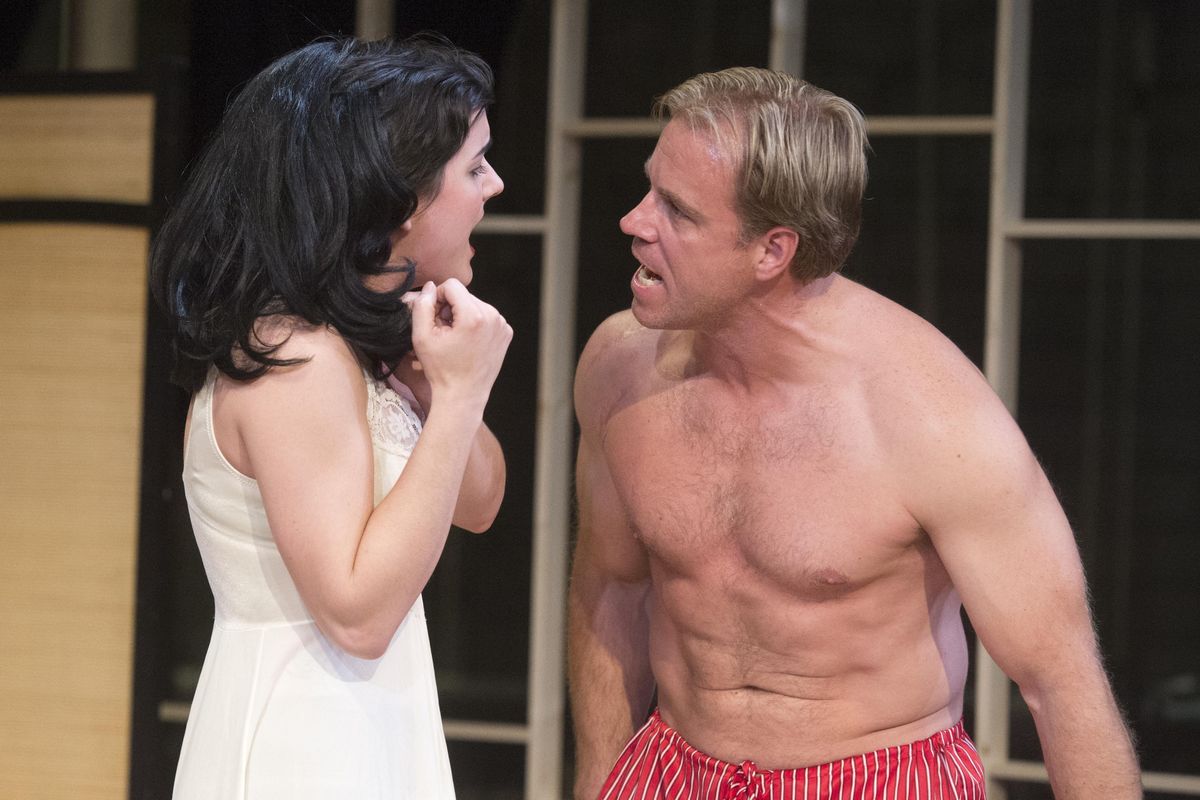‘Streetcar’ plot still edgy, even for modern audience

Tennessee Williams’ “A Streetcar Named Desire” is generally considered one of the greatest pieces of theater ever written, a tragic tale of two wayward sisters and the brutish man who comes between them. But most people are likely familiar with the story through Elia Kazan’s 1951 big screen adaptation, which featured Marlon Brando in a performance that forever changed the style of film acting.
Audiences attending the Civic Theatre’s upcoming production of Williams’ 1947 drama might be surprised, then, to see a show that’s far edgier than the film it inspired. The play’s hard edges, particularly its sexual content, were softened by Old Hollywood’s strict production code, and Williams’ original, darker ending was altered by film studio censors. (Some of the cut scenes were restored in 1993.)
“The story is just so rich,” said director Troy Nickerson. “It’s like church. It’s one of those shows that’s to be respected.”
“It transcends time, which is why we still put it on today,” said cast member Nichole Dumoulin. “Until men stop hitting women, you can do this show forever.”
Set in New Orleans’ French Quarter, “Streetcar” opens as an emotionally unstable woman named Blanche DuBois (Alyssa Day), having been evicted from her Mississippi home, moves in with her younger sister Stella (Dumoulin) and her volatile husband Stanley Kowalski (Billy Hultquist). Blanche’s presence immediately upends the hierarchy within the house, and Williams traps us in the Kowalskis’ crumbling tenement as the trio’s unhealthy power dynamics boil over.
Williams is certainly one of the most influential and revered American dramatists, and his Southern gothics such as “The Glass Menagerie” and “Cat on a Hot Tin Roof” provide actors with showy, complex characters. “Streetcar” is no exception.
“Every one of his other plays I’ve read, there’s been a role where I was like, ‘One day, I have to be that person,’ ” Dumoulin said. “And Stella is definitely one of them. … Every time I’ve seen Stella done, she’s this soft, little victim, and I don’t play soft victims.”
“(Stanley) is a bucket list role, for sure,” Hultquist said. “There’s a lot of rage in this guy. This is his house, this is his castle, and no one’s going to tell him differently.”
But after digging into these roles, they’re left with a lingering question: Is Stanley Kowalski a fundamentally bad guy?
“I mean, he’s gotta be a bad guy. He beats up women,” Nickerson said. “But is there something about him that’s likeable? There has to be. … That’s the thing about Stanley: You have to create this man, but you still have to make us like him.”
“Regardless of how he treats Stella, she’s his world,” Hultquist said. “Without Stella, I don’t think he would be able to survive and function. … He treats her in this inhumane ways, but the abuser in him will turn it around and pull her right back in.”
And then there’s the matter of the show’s most iconic scene, in which Stanley shouts for Stella outside her window. It’s a moment that comes with a lot of cultural baggage, and even those who are totally unfamiliar with “A Streetcar Named Desire” have likely seen it referenced or spoofed.
“In my mind, I’ve seen it parodied so many times. It’s like, boy, the audience is just going to laugh at this part,” Hultquist said. “However, how that moment is built up and directed, it’s beautiful.”
“It’s a pleasure to work with the actors that I have in these roles,” Nickerson said. “You have the luxury to create almost anything you want. When we do a scene, every moment is planned and crafted and worked. When you see it, it shouldn’t look that way, but in a show like this, the silence is as important as the words.”